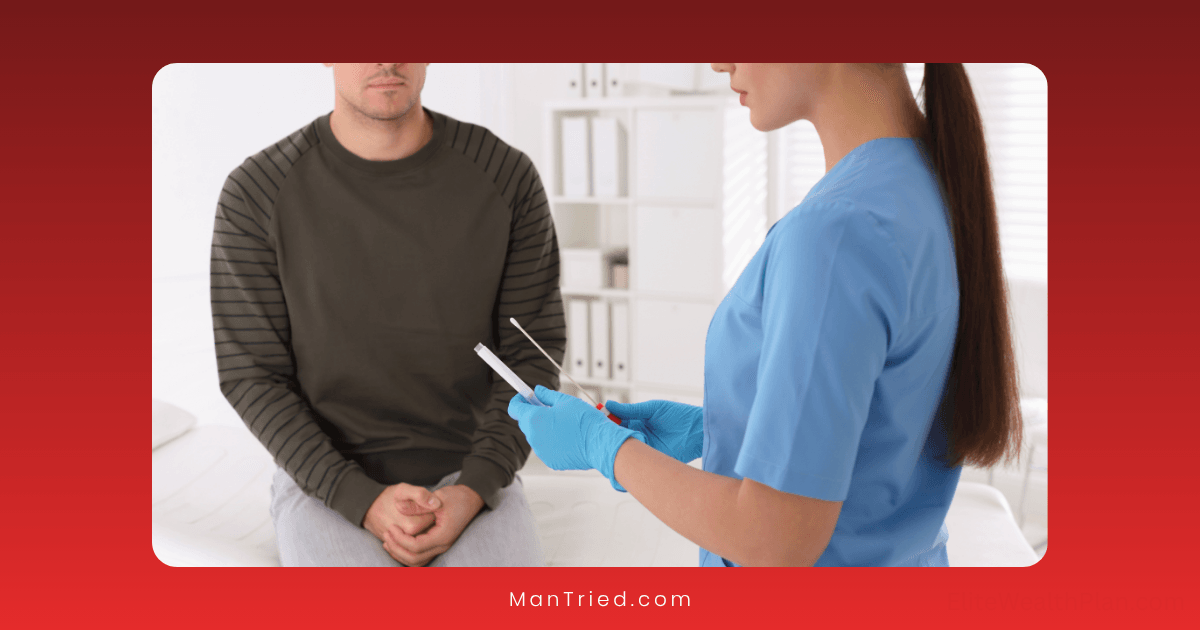STI Testing Schedule: What Tests You Need and When

Sexually transmitted infections (STIs) affect millions of Americans each year, yet many cases go undiagnosed due to inadequate testing. Whether you’re sexually active with multiple partners, starting a new relationship, or simply being proactive about your health, understanding when and how to get tested is crucial. This comprehensive guide breaks down the recommended testing schedules, explains which tests you need based on your circumstances, and provides practical advice for navigating the testing process.
Why Regular Testing Matters
According to the Centers for Disease Control and Prevention (CDC), there are approximately 26 million new STI cases in the United States annually. Many infections show no symptoms initially but can cause serious health complications if left untreated, including:
- Fertility problems
- Increased risk of certain cancers
- Chronic pain
- Transmission to partners
- Complications during pregnancy
Regular testing allows for early detection and treatment, preventing these complications and reducing transmission rates. It’s an essential component of responsible sexual health management.
General Testing Recommendations by Demographic
The CDC and other health organizations provide clear guidelines about who should get tested and how often. Here’s a breakdown of the current recommendations:
For Everyone
- HIV: All adults and adolescents between 13-64 should be tested at least once in their lifetime, regardless of perceived risk factors.
- Hepatitis C: All adults 18 and older should be screened at least once, with ongoing testing for those with risk factors.
For Sexually Active Women Under 25
- Chlamydia and Gonorrhea: Annual screening recommended
- HIV: At least once, with repeat testing based on risk factors
- Syphilis: Based on risk factors
For Women 25 and Older
- Chlamydia and Gonorrhea: Annual screening if you have new or multiple partners, a partner with an STI, or other risk factors
- HIV: Risk-based testing
- Syphilis: Risk-based testing
For Pregnant Women
- HIV, Syphilis, Hepatitis B, and Hepatitis C: Testing recommended early in pregnancy for all pregnant women
- Chlamydia and Gonorrhea: Testing recommended for all pregnant women under 25 and older women with risk factors
- Repeat testing: In the third trimester for women at continued risk
For Men Who Have Sex with Men (MSM)
- Syphilis, Chlamydia, and Gonorrhea: At least annual screening, with testing every 3-6 months recommended for those with multiple or anonymous partners
- HIV: At least annual screening, with more frequent testing (every 3-6 months) for those at higher risk
- Hepatitis B: One-time testing unless ongoing risk factors exist
- Hepatitis C: Annual testing for those living with HIV
For Transgender and Gender Diverse Individuals
Testing recommendations should be based on anatomy present and sexual behaviors rather than gender identity. The National LGBTQ Health Education Center recommends working with healthcare providers to develop personalized screening plans.
Testing After Potential Exposure
If you’re concerned about a specific exposure, timing matters. Each STI has a “window period”—the time between infection and when a test can reliably detect it. Testing too early can lead to false negatives.
Here’s a guide to optimal testing times after a potential exposure:
HIV
- Nucleic Acid Test (NAT): 10-33 days
- Antigen/Antibody Test: 18-45 days
- Antibody-only Test: 23-90 days
According to the U.S. Department of Health & Human Services, most HIV tests used today can detect infection 18-45 days after exposure.
Chlamydia and Gonorrhea
- Urine Test: 7-14 days
- Swab Test: 14 days
Syphilis
- Blood Test: 3-6 weeks for reliable results
Herpes
- Blood Test: 12-16 weeks for antibody development
- Swab Test: Can be performed as soon as symptoms appear
Hepatitis B
- Blood Test: 3-6 weeks
Hepatitis C
- Antibody Test: 8-11 weeks
- Confirmation Testing: recommended at 6 months for definitive results
Types of STI Tests and Their Accuracy
Understanding the different testing methods can help you make informed decisions about your sexual health care:
Nucleic Acid Amplification Tests (NAATs)
NAATs detect the genetic material (DNA or RNA) of the infection-causing organisms.
- Used for: Chlamydia, gonorrhea, trichomoniasis, HIV
- Sample types: Urine, swabs (vaginal, rectal, throat), blood
- Accuracy: Highly sensitive (95-99%) and specific (95-99%)
- Advantages: Can detect infections before symptoms appear; requires smaller samples
Antibody Tests
These tests detect antibodies your body produces in response to an infection.
- Used for: HIV, syphilis, herpes, hepatitis
- Sample type: Blood
- Accuracy: Varies by infection and test generation
- Limitations: Longer window periods; may not distinguish between past and current infections
Antigen Tests
These detect proteins from the infectious organism itself.
- Used for: HIV, hepatitis
- Sample type: Blood
- Accuracy: High specificity but variable sensitivity
- Advantages: Can detect infections earlier than antibody tests
Culture Tests
Cultures attempt to grow the infectious organism from a sample.
- Used for: Gonorrhea, herpes (when lesions are present)
- Sample types: Swabs from infected sites
- Accuracy: High specificity but lower sensitivity than NAATs
- Limitations: Takes longer to get results; requires viable organisms
Special Considerations for Testing
Testing Sites and Sample Collection
Different STIs may require samples from specific body sites based on your sexual practices:
- Oral sex: Throat swabs for gonorrhea and sometimes chlamydia
- Receptive anal sex: Rectal swabs for gonorrhea and chlamydia
- Vaginal sex: Urine tests, vaginal swabs, or urethral swabs
According to a study published in the Journal of Clinical Microbiology, multi-site testing significantly increases detection rates for gonorrhea and chlamydia among individuals who engage in various types of sexual contact.
At-Home Testing Options
At-home testing kits have become increasingly available and reliable. According to research published in JAMA Network Open, high-quality at-home tests can be as accurate as clinic-based testing when used correctly.
Benefits include:
- Privacy and convenience
- Reduced barriers to testing
- Option to test more frequently
Limitations include:
- Potentially higher costs (though many insurance plans now cover home testing)
- Limited guidance if results are positive
- Fewer testing options compared to clinical settings
Reputable at-home testing services include Everlywell, LetsGetChecked, and myLAB Box.
Creating Your Personal Testing Schedule
While general guidelines provide a framework, your ideal testing schedule should be personalized based on:
- Your sexual practices: Frequency, types of contact, number of partners
- Protection methods used: Consistent condom use reduces risk but doesn’t eliminate it
- Partner communication: Open discussions about testing history and status
- Symptoms: Any unusual symptoms warrant immediate testing
- Local prevalence: STI rates vary by geographic location
Dr. Demetre Daskalakis, Director of the CDC’s Division of HIV Prevention, recommends: “Having an open conversation with your healthcare provider about your sexual history is the best way to determine your optimal testing schedule.”
Navigating the Testing Process
Before Testing
- Research testing locations: Options include primary care providers, sexual health clinics, community health centers, and at-home testing
- Check insurance coverage: Many insurance plans cover STI testing, especially preventive screening
- Prepare questions: Make a list of concerns or symptoms to discuss
- Consider timing: Be aware of window periods for accurate results
During Testing
- Be honest: Accurate information about your sexual history helps determine appropriate tests
- Ask questions: Understand which tests are being performed and why
- Discuss follow-up: Know how and when you’ll receive results
- Request multi-site testing: If appropriate based on your sexual practices
After Testing
- Follow up on results: Don’t assume no news is good news
- Understand your results: Ask for clarification if needed
- Get appropriate treatment: If positive, follow treatment recommendations completely
- Consider partner notification: Many clinics offer assistance with anonymous notification
- Schedule follow-up testing: Confirm cure for bacterial infections; establish ongoing testing schedule
Common Testing Barriers and Solutions
Cost Concerns
- Insurance coverage: Most insurance plans cover STI testing
- Public health clinics: Offer free or sliding-scale testing
- Online resources: GetTested can help locate affordable testing sites
- University health centers: Often provide low-cost testing for students
Privacy Concerns
- Confidential testing: Results are protected by medical privacy laws
- Anonymous testing: Available for HIV in many locations
- At-home testing: Provides maximum privacy
- Specialized clinics: Sexual health clinics prioritize discretion
Emotional Barriers
- Anxiety: Remember that testing is a responsible health decision
- Stigma: Work with providers who maintain non-judgmental approaches
- Fear of results: Early detection leads to more effective treatment
- Support resources: Consider bringing a supportive friend or accessing counseling services
Special Situations
Testing in Long-Term Relationships
Many couples wonder if testing is necessary in monogamous relationships. Experts recommend:
- Initial testing: Both partners should be tested before stopping barrier methods
- Communication: Discuss expectations regarding monogamy and testing
- Periodic testing: Consider occasional testing even in long-term relationships, especially if complete monogamy cannot be guaranteed
Testing After Sexual Assault
The National Sexual Violence Resource Center recommends:
- Immediate care: Seek medical attention within 72 hours if possible
- Baseline testing: Initial testing to determine if any infections were present before the assault
- Follow-up testing: Scheduled according to window periods for various STIs
- Preventive treatment: Post-exposure prophylaxis may be recommended for HIV and other infections
Conclusion: Making Testing a Regular Part of Your Health Routine
Regular STI testing is a fundamental component of sexual health care. By understanding what tests you need and when to get them, you’re taking control of your health and demonstrating care for your partners.
Remember that testing positive for an STI is not a reflection of your worth or character—infections are common, and most are easily treatable. The real risk comes not from testing but from avoiding it and allowing undetected infections to cause harm.
Create a testing schedule that works for you, communicate openly with partners and healthcare providers, and approach testing as an act of self-care rather than a burden. Your future self—and your partners—will thank you.






